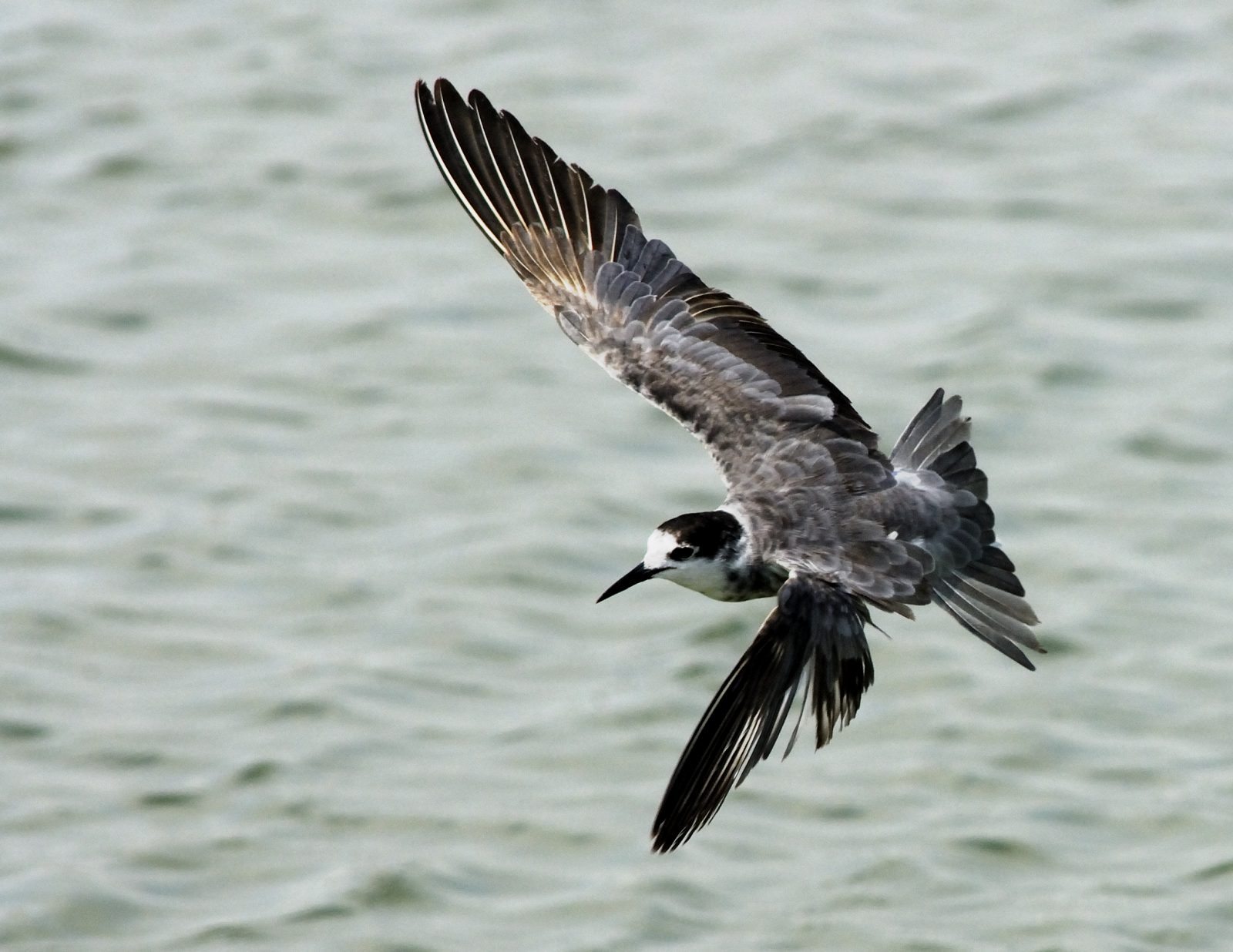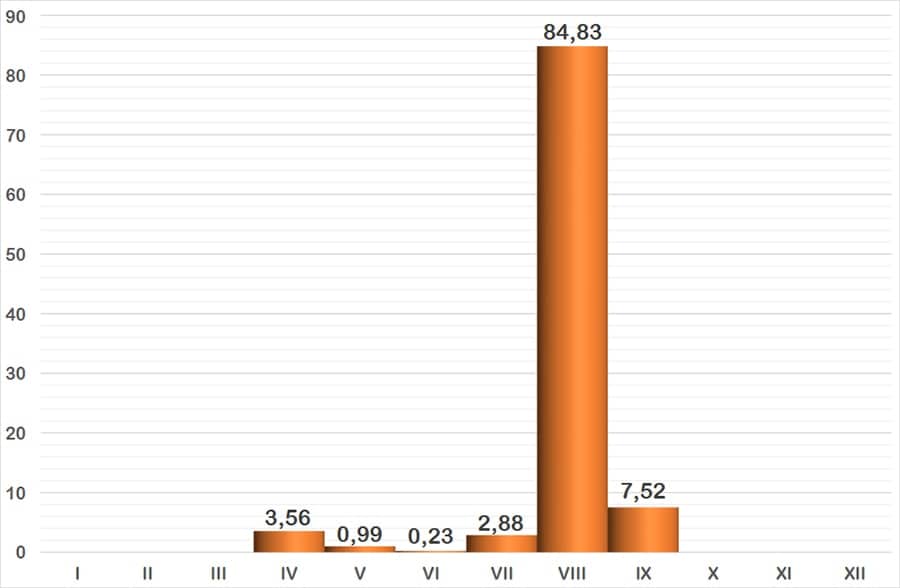This small summer “tern” is strikingly dark in summer, with black plumage covering its breast, neck and head, and its back and the upper side of its wings are plain grey. The legs and bill are dark. In winter, it has a different appearance, the black is replaced by a uniform flattened plumage and the head has a characteristic pattern with a hood. In flight it is more leisurely and tends to fly sideways, the wings are pointed, and the tail is “low-cut”, not forked like that of the terns.

Species 1
Black Tern
Scientific name
Family 2
Taxonomic Affinity Group 3
Phenology 4
It appears during the summer, and can be seen from April to September, with a marked post-breeding migratory passage in July, when it is almost certain to come into contact with the species.

The graph represents the probability of seeing a species during the year, grouped into months. The vertical axis indicates the percentage value. Each of the bars expresses its value. The horizontal axis represents the months: I = January, II = February, III = March, IV = April, V = May, VI = June, VII = July, VIII = August, IX = September, X = October, XI = November and XII = December.
Observation recommendations
The challenge posed by the identification of this bird in transition or winter plumage, and at a time such as the post-breeding migratory passage, is in itself an incentive for birdwatchers at this time of year. In the ‘Salinas Nuevas’, ‘Ribera de la Algaida’ and ‘Cerrillos’ it is easy to see it perched, while in the ‘Salinas Viejas’ it can also be observed when foraging. It is also a species classified as “endangered”.
Observation areas where we can find it
Notes
[1] The names used are from the list of birds of Spain, drawn up by SEO/BirdLife and updated to 2019 (https://seo.org/listaavesdeespana/). The reference is: Rouco, M., Copete, J. L., De Juana, E., Gil-Velasco, M., Lorenzo, J. A., Martín, M., Milá, B., Molina, B. & Santos, D. M. 2019. Checklist of the birds of Spain. 2019 edition. SEO/BirdLife. Madrid.
[2] The taxonomic family to which it belongs is indicated.
[3] Traditionally, waterbirds have been grouped according to their taxonomy or “taxonomic affinity”, i.e., when some birds coincide in certain features that allow them to be classified scientifically, but without leaving the rigour of science, they are put together in these groups so that they can be easily recognised. These groups are the following: Greves (belonging to the Podicipedae family), Herons and Similar (includes the families: Ardeidae -Herons- Ciconiidae -Storks- and Threskiornithidae -Ibises and spoonbills-), Ducks (the whole Anatidae family), Coots and Similar (the family Rallidae corresponding to Rails, Gallinules and Coots), Cranes (also with only one family, the Gruidae), Waders , a heterogeneous group, the most diverse of this classification, includes the families Burhinidae (Stone-curlews), Haematopodidae (Oystercather), Recurvirostridade (Avocets and Stilts), Glareolidae (Pranticole), Charadriidadea (Plovers), Scolapacidae and finally Gulls and Similar (the recently unified family Laridae, i.e. Gulls and Terns).
[4] Phenology studies the relationship between the cycles of living beings and meteorological factors, and in our latitude these factors manifest themselves as variations throughout the year, thus relating the seasons to the birds’ cycles (breeding, migratory journeys, etc.) The graph shows the probability of seeing a bird depending on the month. It uses data from 48 bird censuses carried out between October 2016 and September 2018. The method used is that of a census route with sampling stations, with a total count on the sheet of water.
